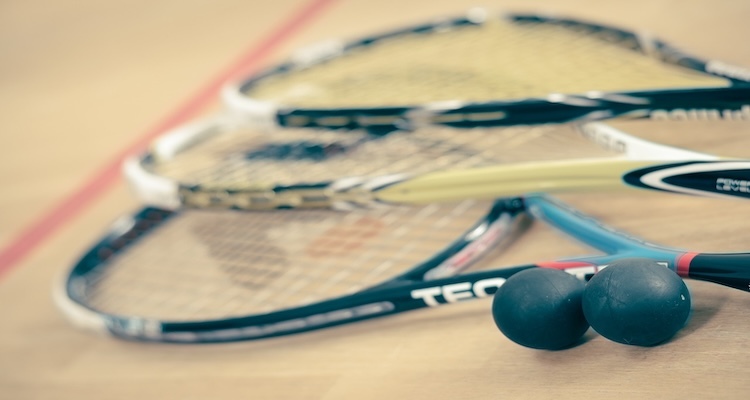
Squash is a fast-paced racket sport played on an enclosed court by two players (singles) or four players (doubles). Players use a small, hollow rubber ball and squash rackets to hit the ball against the front wall, aiming to make it land within the designated lines. The objective is to outmaneuver the opponent by hitting the ball strategically, utilizing angles and pace changes to win points. Matches consist of several games, typically played to 11 points each, with scoring based on rally points. Squash demands agility, speed, and tactical prowess, making it a challenging and exhilarating sport for players of all levels.
While it offers numerous health benefits, including cardiovascular fitness and muscular strength, the nature of the game also poses certain risks for injuries. Understanding these common injuries is crucial for players, coaches, and medical professionals alike to effectively prevent, manage, and rehabilitate them.
One of the most prevalent injuries in squash is ankle sprains and strains. The dynamic movements involved in squash, such as sudden changes in direction and rapid acceleration, put immense stress on the ankles. Players often pivot, twist, and lunge, making their ankles vulnerable to injuries. Sprains occur when the ligaments supporting the ankle stretch or tear due to sudden twisting motions, while strains involve the overstretching or tearing of muscles or tendons. Proper warm-up exercises, wearing supportive footwear, and ankle strengthening exercises can help reduce the risk of these injuries.
The repetitive nature of movements in squash, including lunging and squatting, can lead to various knee injuries. Patellar tendinitis, commonly known as jumper's knee, occurs due to overuse and strain on the patellar tendon, resulting in pain and inflammation around the kneecap. Additionally, anterior cruciate ligament (ACL) injuries may occur when players abruptly change direction or land awkwardly, causing the ligament to tear. Strengthening exercises targeting the muscles around the knee and using proper technique during play can mitigate the risk of knee injuries.
Squash requires repetitive overhead movements when serving and hitting shots, placing significant strain on the shoulders. Over time, this can lead to shoulder strains and rotator cuff injuries. Rotator cuff tears or strains occur when the tendons in the shoulder are overstretched or torn, causing pain and reduced range of motion. Proper warm-up, shoulder-strengthening exercises, and maintaining good technique can help prevent these injuries. Players should also avoid overexertion and gradually increase their training intensity to minimize the risk of shoulder-related problems.
The dynamic and explosive movements involved in squash, such as lunging and twisting, can contribute to back pain and injuries. Strain on the muscles, ligaments, and discs in the spine may result from poor technique, overuse, or inadequate warm-up. Common conditions include muscle strains, herniated discs, and vertebral compression fractures. Proper body mechanics, core-strengthening exercises, and maintaining flexibility through stretching can alleviate back pain and reduce the likelihood of sustaining back injuries.
Given the grip and swing mechanics required in squash, players are susceptible to hand and wrist injuries. These injuries may include sprains, strains, or even fractures resulting from repetitive impact or awkward movements. Tendonitis, commonly referred to as tennis elbow or golfer's elbow, can also occur due to overuse of the forearm muscles involved in gripping the racket. Wearing protective gear, using proper grip techniques, and incorporating wrist-strengthening exercises into training routines can help prevent these injuries.
Despite the protective eyewear mandated in competitive squash, eye injuries remain a concern, particularly for recreational players. The high-speed nature of the game increases the risk of being struck by the ball or racket, leading to injuries such as corneal abrasions, blunt trauma, or orbital fractures. Wearing appropriate eyewear with polycarbonate lenses and adhering to safety guidelines can significantly reduce the risk of eye injuries during play.
Squash demands rapid acceleration, deceleration, and changes in direction, placing significant strain on the muscles throughout the body. Muscle strains and sprains may occur due to sudden movements or inadequate warm-up, affecting various muscle groups such as the quadriceps, hamstrings, and calves. Proper conditioning, including dynamic stretching and strengthening exercises, can help prepare the muscles for the demands of the game and reduce the risk of strains and sprains.
The constant movement and impact on hard court surfaces make foot injuries a common occurrence in squash. Conditions such as plantar fasciitis, stress fractures, and metatarsalgia (pain and inflammation in the ball of the foot) can develop from repetitive stress and overuse. Wearing appropriate footwear with sufficient cushioning and support, maintaining proper foot alignment, and incorporating foot-strengthening exercises into training routines can help prevent foot injuries.
In conclusion, while squash offers numerous physical and mental benefits, players must be aware of the potential risks associated with the sport. By understanding the common injuries and implementing preventive measures such as proper warm-up, conditioning, technique refinement, and use of protective gear, players can enjoy the game safely and reduce the likelihood of sustaining injuries. Additionally, seeking prompt medical attention and adhering to rehabilitation protocols are essential for effective injury management and optimal recovery. With a proactive approach to injury prevention and management, squash players can continue to pursue their passion for the sport while minimizing the risk of setbacks.
This blog does not not offer medical or health advice and you should always consult a qualified healthcare professional about any injury prevention or injury management strategies. If you want to find a specialist to consult do search our easy to use directory to find a sports physiotherapist, chiropractor, sports therapist, or osteopath near you.
Image by Firmbee from Pixabay
